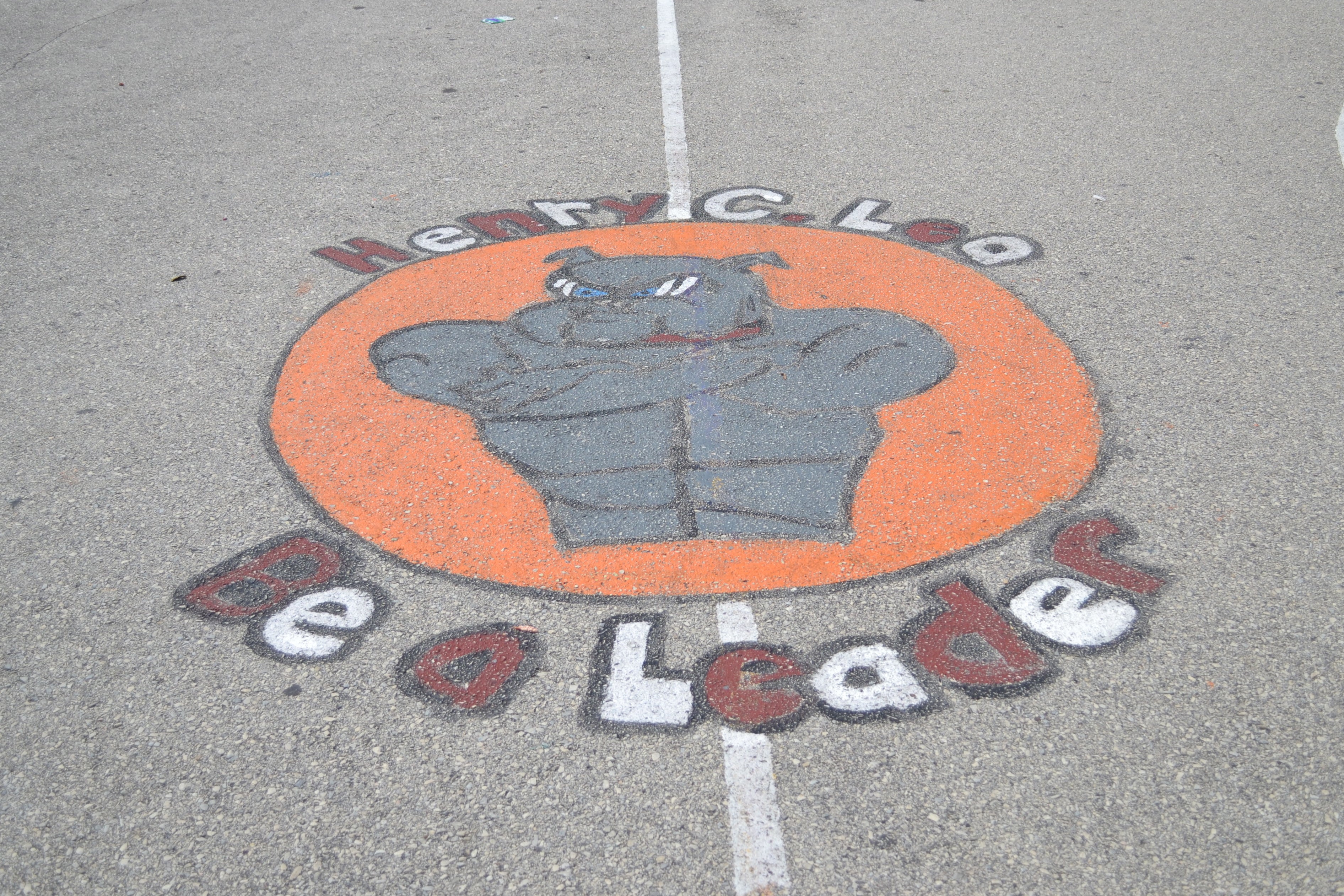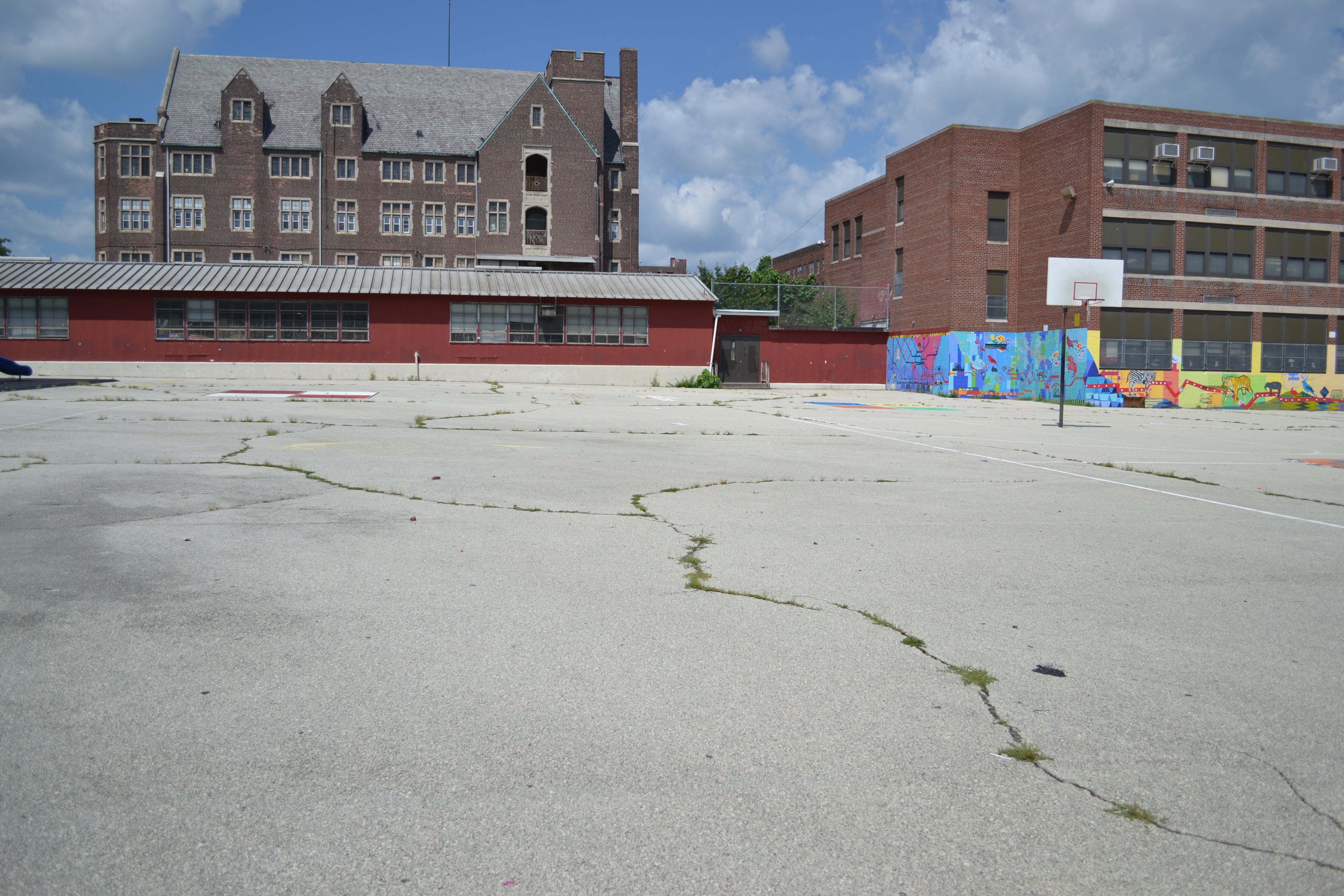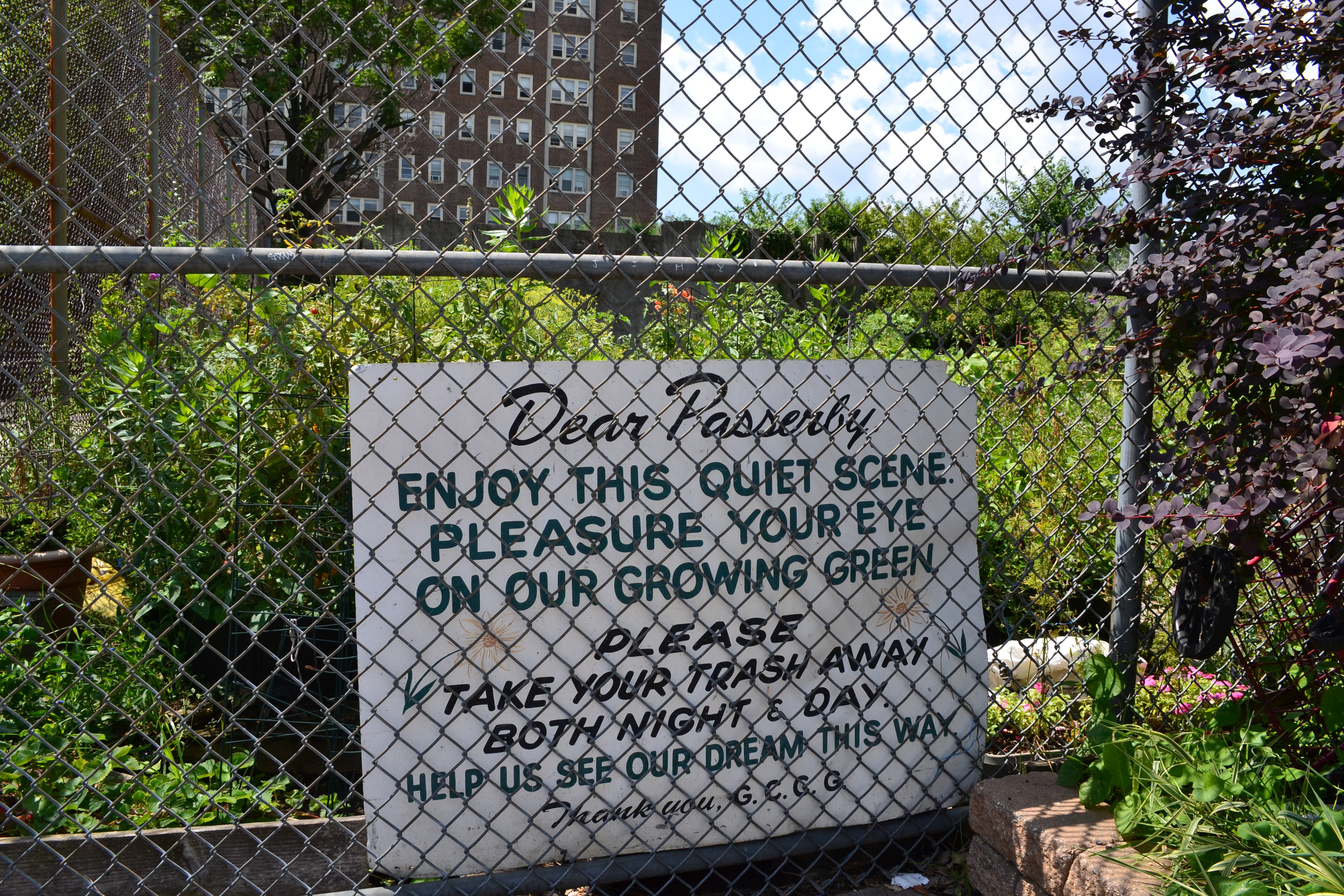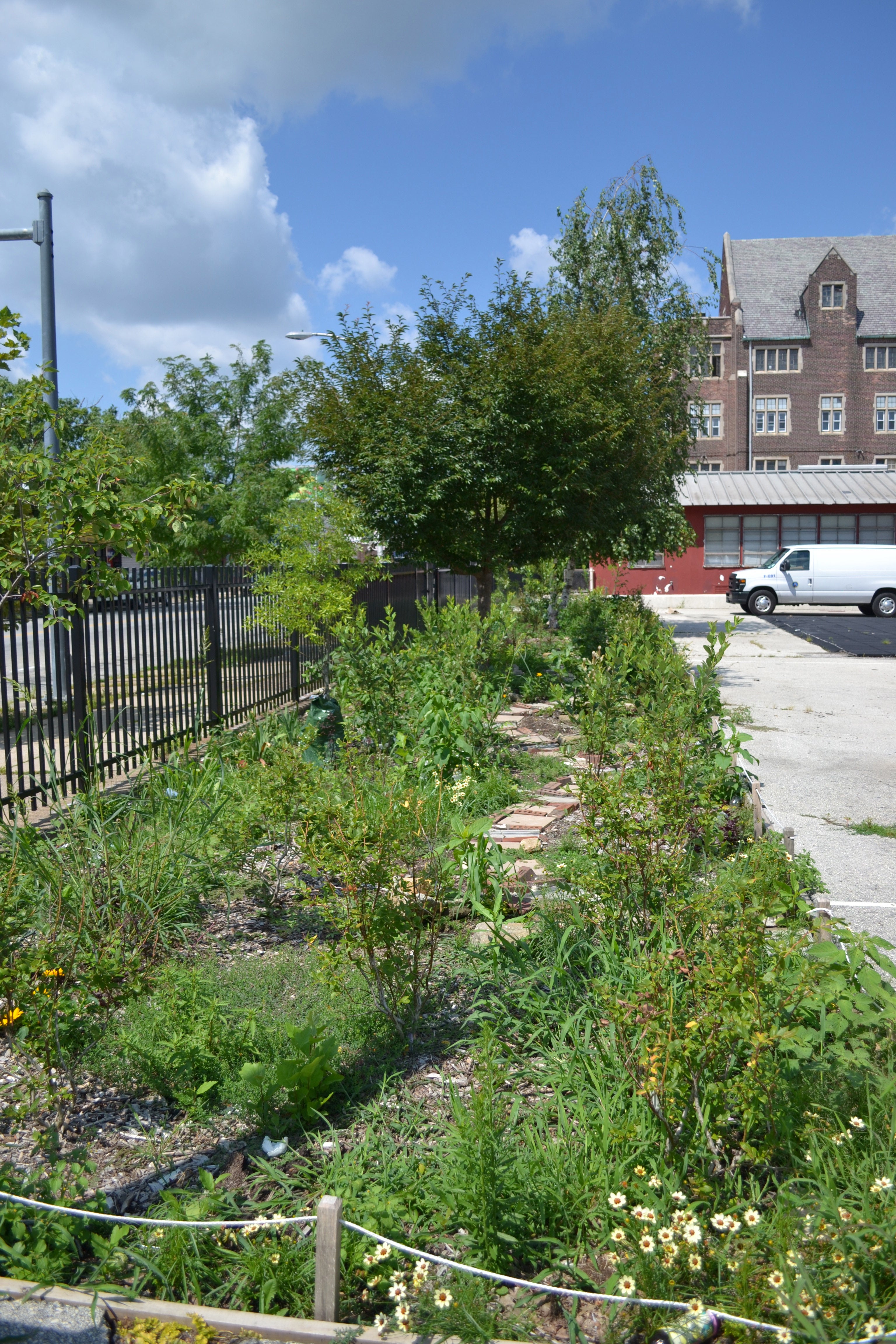Greening initiative at Lea School gets boost from Water Department, PECO

This summer the Philadelphia Water Department and PECO committed significant green (read: financial support) to the West Philly Coalition for Neighborhood Schools‘ (WPCNS) efforts to green the schoolyard at Henry C. Lea School.
WPCNS is a group of neighborhood activists working to bring the community and its resources into West Philly’s schools. WPCNS is doing so one school at a time, and at the moment, the group’s focus is Lea elementary school, on 47th Street between Locust and Spruce streets. One of the primary ways WPCNS is working to support Lea Elementary is through an effort called “Greening Lea” aimed at transforming the schoolyard into an environmentally- and kid-friendly space.
“The schoolyard is a symbol for everything that’s going on in the school, and making a difference there is a big visual indicator that things are happening,” said Julie Scott, a Greening Lea committee leader.
Today the schoolyard is a massive paved desert.
“It’s across the street from a tennis court and community garden plot, so it’s a really important corner in the neighborhood, and it’s just a big asphalt field,” Scott said.
Work to transform the schoolyard into an aesthetically and environmentally pleasing space began in early 2012 when Lea was invited to participate in a Community Design Collaborative charrette – Transforming Urban Schoolyard Design. The charrette led to the Greening Lea Master Plan, and with the master plan in hand, WPCNS’ Greening Lea committee set its sights on fundraising.
Already Greening Lea has received two important donations. This summer PWD committed $242,000 to the project through its Stormwater Management Incentives Program (SMIP), and PECO offered a separate PECO Green Region $10,000 matching grant, which WPCNS supporters have already matched.
The Greening Lea committee will put the $242,000 SMIP grant towards phase one of the Greening Lea Master Plan. This initial phase will include:
- Diverting stormwater from one of the school buildings and the adjacent streets into a rain garden that will run along 47th Street
- De-paving the basketball court and reorienting it with a water detention system underneath
- Installing bumpouts at the corners of 47th and Spruce streets and 47th and Locust streets.
The fundraising goal for phase one is $325,000.
“We talked about doing a porous pavement basketball court, but that might be above our budget in the end, but [the court] will definitely be detaining water underneath,” Scott said.
With the $20,000 brought in by the PECO match grant ($10,000 from PECO and $10,000 from WPCNS supporters), the Greening Lea committee will most likely relocate, de-pave and resurface a play area adjacent to the SMIP grant’s focus area. That could be the next project passersby notice, but “exactly when that will be and where that will be is still being worked out,” Scott said.
“We’re very excited that we’ve already completed our match,” she said. “We were able to get some larger donations from individuals and from University City District and the rest is from individuals.”
Of the individual donations, Scott said, almost 75 percent came from right around the school.
Prior to receiving the PWD and PECO grants, Lea School was named one of 10 finalists for a $75,000 Green School Makeover grant from Global Green USA. Though Lea did not win the grand prize, Global Green USA did give the school a $1,000 Office Depot gift card.
That is not the only support the school has received recently. This summer the University of Pennsylvania* announced plans to strengthen ties with Lea. The partnership will provide a “new level of resources” to the elementary school, but Penn faces the challenge of supporting Lea without stoking fears of a university takeover, City Paper wrote in June.
WPCNS is aware of the delicate balance. The group’s blog states, “We want to be very explicit about the fact that that is NOT the intention of WPCNS to ‘fix’ neighborhood schools by filling them with out-of-neighborhood kids.”
The blog goes on to say that most of the families attending Lea today are African-American and most earn below area-average incomes. WPCNS hopes that, after its work is done, most of the families attending Lea will still be African-American and will still be working and lower-middle class.
Anxious to get started on its greening initiatives, WPCNS’ Greening Lea committee already broke ground on one planting bed that runs along the Spruce Street edge of the schoolyard. The School District lent a crew to break up the pavement, and about 60 volunteers removed additional debris and planted a long, rectangular garden.
“By choosing this planting bed area, it wasn’t going to interfere with any of the other work we were going to do later with the master plan,” Scott said. It did scratch that initial itch to start bringing the green vision to fruition though.
The Greening Lea committee hopes to have the whole play area, rain garden and basketball court completed by 2015.
“I’d love people to get excited and get involved,” Scott said. “This is going to be a great project for the community.”
*DISCLOSURE: PlanPhilly is a project of PennPraxis, the applied research arm of the University of Pennsylvania’s School of Design.
WHYY is your source for fact-based, in-depth journalism and information. As a nonprofit organization, we rely on financial support from readers like you. Please give today.



















